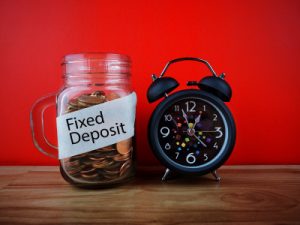Investment Basics – All About RDs and FDs
We spoke about the basics of investing last month and it is time to delve into some of the popular investment options available.
In this blog, we will touch upon an investment avenue that is perhaps the most well-known of all. If you have just begun your investment journey or have a low risk appetite then this is the perfect choice for you.
Let us talk about Recurring Deposits and Fixed Deposits.
What is a Recurring Deposit?

RD or recurring deposit is an investment plan wherein you contribute a set amount each month for a certain amount of time. However, certain banks like ICICI do offer RD schemes wherein you can invest a flexible amount each month.
After the maturity period, you will receive your returns along with an interest component added to it which can range from 5% to 8%. An RD scheme will help you stay disciplined with your investment as you need to mandatorily set aside a sum each month.
What is a Fixed Deposit?

Similar to an RD but with a few minor differences, a Fixed Deposit or Term Deposit is another popular investment instrument offered by banks and NBFCs.
Unlike an RD where you invest each month, FDs let you invest a one-time lump sum amount for a fixed duration. Your existing account can be linked to your FD account without having to open a separate one.
Additionally, fixed deposit interest rates largely remain unchanged by market fluctuations, making this an incredibly safe investment option.
Time deposit is another investment option that has many similar features as a term deposit. However, the tenure may vary and sometimes there may not be tax deducted at source. It is important to check with your bank before going for this option.
Recurring Deposit vs. Fixed Deposit – A Comparison
Given below is a comparison between RD and FD –
| Feature | Recurring Deposit | Fixed Deposit |
| Frequency | Investments are made through monthly payments | Investments are made through a one-time lump sum payment |
| Premature Payout | Monthly or quarterly payout is generally not available | Monthly or quarterly payout is available |
| Renewability | Can be auto renewed | Can be auto renewed |
| Investment Term | Tenure ranges from 6 months to 10 years | Tenure ranges from 7 days to 10 years |
| Penalties | Penalties are imposed if the payments are not made regularly. Penalties can also be imposed if the deposit is withdrawn prematurely | Since the payment is made one time, there are no penalties involved unless the deposit is prematurely withdrawn |
| Interest | Between 5% to 7% with senior citizens being eligible for higher rates | Between 5% to 7% with senior citizens being eligible for higher rates |
| Loan | Available for upto 90% of deposit after a certain number of investments are made | Available for upto 90% of deposit |
| Tax on Maturity | Applicable | Applicable |
| Tax Exemption | Cannot be claimed | Can be claimed in certain cases |
| Risk and Market Fluctuations | None | None |
Things to Consider While Investing in an RD/FD

FDs and RDs are great investment options for those looking at low-risk avenues. Not only will your principal remain safe regardless of market fluctuations, the interest will also not vary.
However, because these investments do not offer high returns they may not help you grow your wealth significantly.
While it is ok to invest a certain amount each month, investing your entire savings into RD or FD with the goal of becoming rich is foolhardy. This is because the interest rates range from just 5% to 7% and may not help against inflation.
Inflation refers to a decrease in the purchasing power of money, i.e., you will have to spend more to purchase the same product over time.
Currently, the inflation rate for retail products such as oil and food prices is at 6.95% and in order to combat this, you will need to earn more than the inflation rate.
Therefore, parking your money in your savings account or only investing in an RD or FD may not be helpful in the long run. Set aside a certain amount in an RD or FD for emergencies perhaps but not the bulk of your savings. How about also investing in other options such as mutual funds or shares ?
In Conclusion
RDs and FDs are investment options that have been popular for a long time. You may have heard of these investment options from your family members even when you were younger. While both these avenues have their own benefits and are risk-free, they may not be enough to beat inflation.
Our suggestion? Invest in an RD or FD but also try to explore other avenues that offer better returns. Read, research, and compare the benefits of each choice with your financial goals and risk tolerance levels. At the end of the day, investments are meant to make you wealthy.
What are your opinions on RD/FD? Do you think these are the best investment options available to you? Let us know in the comments below!